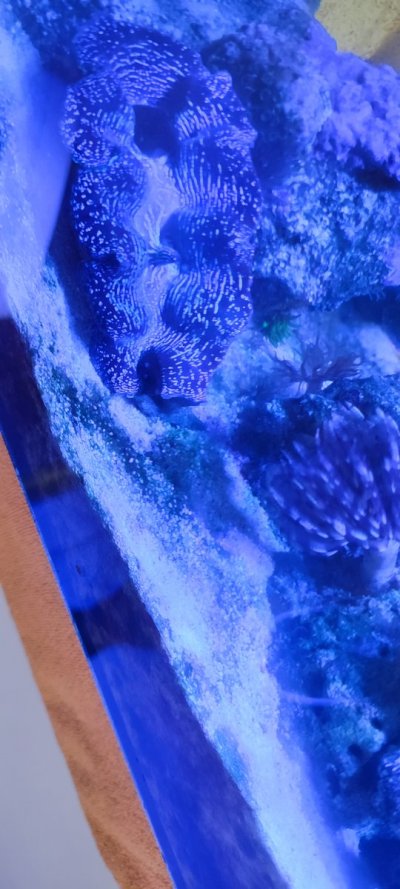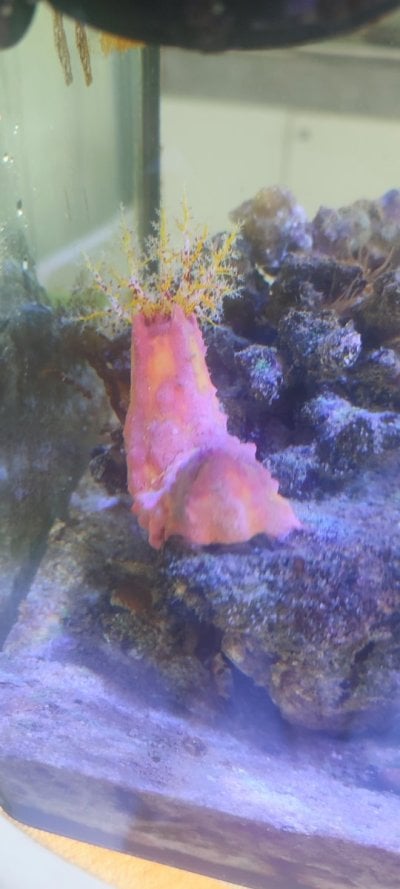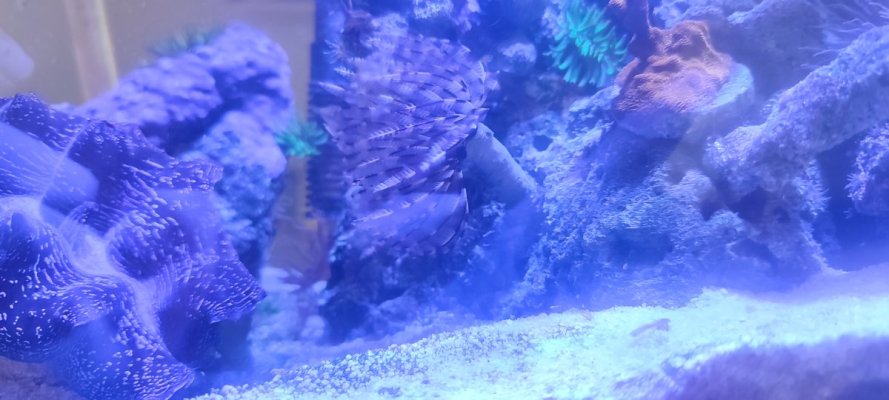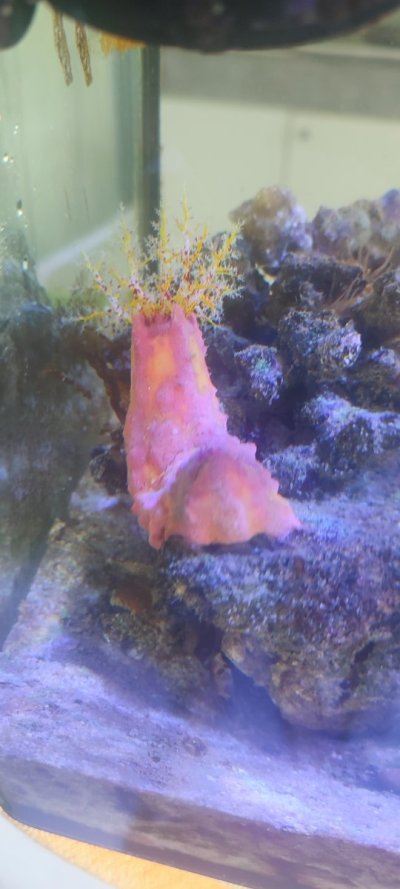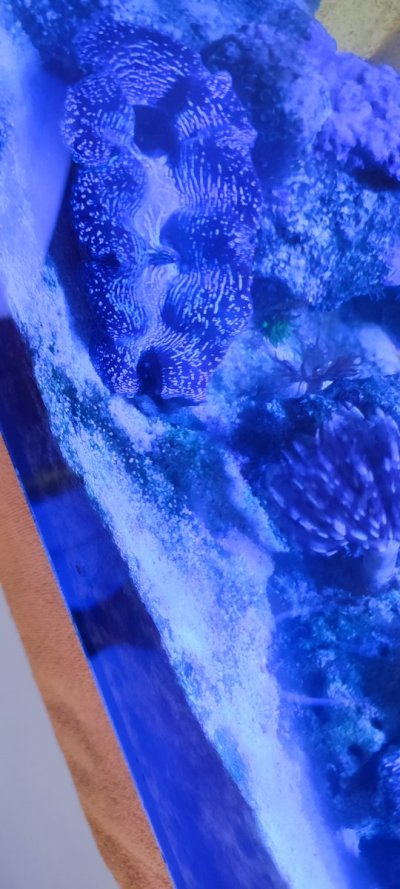Hello invert fanatics!!! In the coming week I will be setting up my first invert only tank! I had a 40g reef tank for 3 years and I am also getting my bachelors of science in Zoology with plans on getting my PhD in something relating to coral health and conservation. I've taken classes on invertebrate zoology and with my prior experience I feel as if I am ready for this. I had to take a few years off from the hobby because living in a dorm made it close to impossible to keep a tank. I am now in an apartment with adequate time and space to get back into it. However, since I am new to invert only tanks and I am used to having bigger tanks, I would just like to hear yall's opinion and tips on your own tanks.
I've got a 15g AIO tank that I will be adding water and live rock and starting the cycle on Friday. I have never had an AIO tank before, the 40g I had a few years ago was set up with separate pumps and a canister filter. This tank came with a filter sock and a 130gph pump. I am keeping the pump and sock in it but also adding a 118gph pump to get adequate flow. I've dealt with cyano before and ******* hated it so id rather have a little extra flow then too little. However, do you think that 243gph is too much for a 15g? From what I remember, I believe 15 times turn over is adequate so this would be ok??? For the filter, I have some bio balls, regular white filter floss and will be adding some sort of carbon filtration. My question is does anyone have an opinion/preference as to using a regular carbon filter pad or to use the actual activated carbon and throw it in some tights. My high school had SW tanks and the teacher used activated carbon in her canister filters but her tanks were always crashing and fish constantly died so that experience is not a good one for me to reference. I kept carbon filter pads in my canister filter and never had a problem so I might just stick to that but i was just curious as to yalls experience with activated carbon. I will probably eventually discard the filter sock in the future and replace it with filter floss once its used but for now it will stay. I will also probably throw some chaeto in tights at the bottom of the filter because that always helped my tank. Ive got a Lighttimetunnel hanging from my ceiling for a light. I used it for a 20g reef tank I kept like 6 years ago so I know it will work well.
As for stocking it;
Once the cycle is over I will probably put a pair of clowns in it to help establish the tank and make sure its ok to put more sensitive animals in. I will eventually return them but I always like to do a soft introduction of animals especially since inverts are so sensitive. The animals listed below are what I would like to have in the finished product
Coral
-softies are my favorite so some xenia, ricordia and zoanthids would suffice
-Id also like to try gonioproa. I had one in my 40g but it never did well and died but I would like to challenge myself to get a healthy one growing in this tank
-I also think gorgonians are super cool but ive never had one before and im not sure if it would be too big for this tank
Sea cucumbers
-specifically Colochirus robustus (yellow cucumber). I think filter feeders are super cool and would love to have one. This would probably one of the last additions to the tank bc I want to make sure the water column is plentiful with mircro-organisms for it to eat
Sea hares
-Elysia spp. is super cool to me. Anyone have experience with this one specifically? Ive been reading that they have chloroplasts in their bodies which is fascinating to me
Sea stars
-Fromia monoillis is what im looking for since they seem to be the most reef safe? Echinoderms are one of my favorite inverts so I need to have one in the tank (preferably sea stars bc their water vascular system is so intriguing)
Fan worms?
-These guys kind of creep me out but i think it would look sick in the tank
Other
-Probably a crab and a shrimp and ill introduce these early in the tank
I have no experience with any of these inverts besides coral, shrimp and crabs which is why I would love to hear anyone's experience with them. I've done a good amount of research, getting info from live aquaria and lots of forums but I always prefer to hear from personal experience. Is this too much for a 15g? Do I need to worry about any of these critters getting sucked into the AIO inlet? I would be more than happy to put some mesh over the filter and pump inlets. For my filter feeding animals, what do you suggest I use to feed. I used reef roids (and actually have some left over but they might have expired at this point) and my corals loved it, would it be good enough for the cucumber and worm? Should I add just one fish to help with the filter feeders? If I end up wanting to put a fish in there I will probs put a pipefish bc Ive kept them before and they would eat off the micro-organisms. For those who have kept sea stars, do you supply them with other food like shrimp and muscles or do they only eat the detritus?
Let me know your throughs and criticism!!!
I've got a 15g AIO tank that I will be adding water and live rock and starting the cycle on Friday. I have never had an AIO tank before, the 40g I had a few years ago was set up with separate pumps and a canister filter. This tank came with a filter sock and a 130gph pump. I am keeping the pump and sock in it but also adding a 118gph pump to get adequate flow. I've dealt with cyano before and ******* hated it so id rather have a little extra flow then too little. However, do you think that 243gph is too much for a 15g? From what I remember, I believe 15 times turn over is adequate so this would be ok??? For the filter, I have some bio balls, regular white filter floss and will be adding some sort of carbon filtration. My question is does anyone have an opinion/preference as to using a regular carbon filter pad or to use the actual activated carbon and throw it in some tights. My high school had SW tanks and the teacher used activated carbon in her canister filters but her tanks were always crashing and fish constantly died so that experience is not a good one for me to reference. I kept carbon filter pads in my canister filter and never had a problem so I might just stick to that but i was just curious as to yalls experience with activated carbon. I will probably eventually discard the filter sock in the future and replace it with filter floss once its used but for now it will stay. I will also probably throw some chaeto in tights at the bottom of the filter because that always helped my tank. Ive got a Lighttimetunnel hanging from my ceiling for a light. I used it for a 20g reef tank I kept like 6 years ago so I know it will work well.
As for stocking it;
Once the cycle is over I will probably put a pair of clowns in it to help establish the tank and make sure its ok to put more sensitive animals in. I will eventually return them but I always like to do a soft introduction of animals especially since inverts are so sensitive. The animals listed below are what I would like to have in the finished product
Coral
-softies are my favorite so some xenia, ricordia and zoanthids would suffice
-Id also like to try gonioproa. I had one in my 40g but it never did well and died but I would like to challenge myself to get a healthy one growing in this tank
-I also think gorgonians are super cool but ive never had one before and im not sure if it would be too big for this tank
Sea cucumbers
-specifically Colochirus robustus (yellow cucumber). I think filter feeders are super cool and would love to have one. This would probably one of the last additions to the tank bc I want to make sure the water column is plentiful with mircro-organisms for it to eat
Sea hares
-Elysia spp. is super cool to me. Anyone have experience with this one specifically? Ive been reading that they have chloroplasts in their bodies which is fascinating to me
Sea stars
-Fromia monoillis is what im looking for since they seem to be the most reef safe? Echinoderms are one of my favorite inverts so I need to have one in the tank (preferably sea stars bc their water vascular system is so intriguing)
Fan worms?
-These guys kind of creep me out but i think it would look sick in the tank
Other
-Probably a crab and a shrimp and ill introduce these early in the tank
I have no experience with any of these inverts besides coral, shrimp and crabs which is why I would love to hear anyone's experience with them. I've done a good amount of research, getting info from live aquaria and lots of forums but I always prefer to hear from personal experience. Is this too much for a 15g? Do I need to worry about any of these critters getting sucked into the AIO inlet? I would be more than happy to put some mesh over the filter and pump inlets. For my filter feeding animals, what do you suggest I use to feed. I used reef roids (and actually have some left over but they might have expired at this point) and my corals loved it, would it be good enough for the cucumber and worm? Should I add just one fish to help with the filter feeders? If I end up wanting to put a fish in there I will probs put a pipefish bc Ive kept them before and they would eat off the micro-organisms. For those who have kept sea stars, do you supply them with other food like shrimp and muscles or do they only eat the detritus?
Let me know your throughs and criticism!!!






